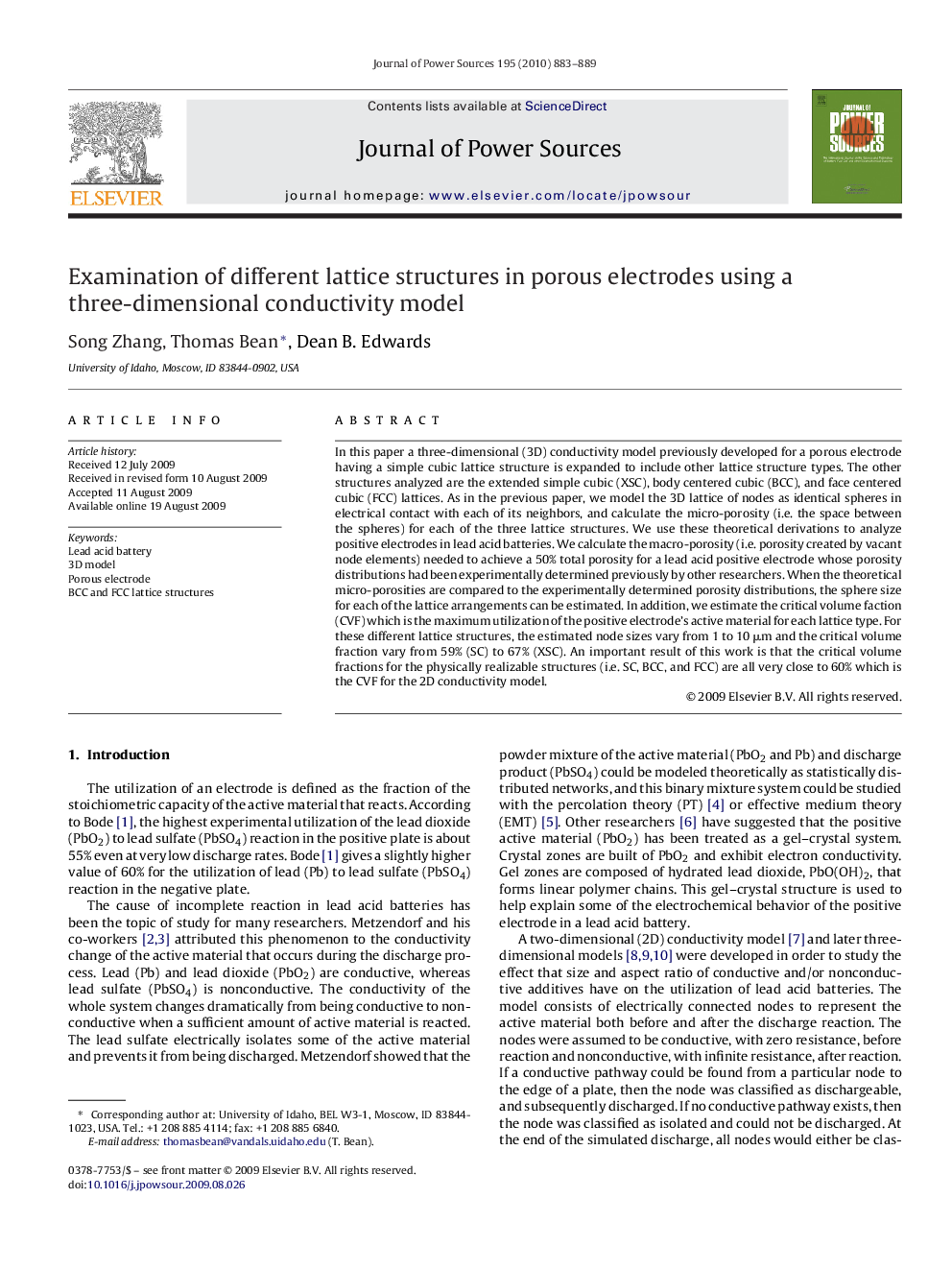| Article ID | Journal | Published Year | Pages | File Type |
|---|---|---|---|---|
| 1289328 | Journal of Power Sources | 2010 | 7 Pages |
Abstract
In this paper a three-dimensional (3D) conductivity model previously developed for a porous electrode having a simple cubic lattice structure is expanded to include other lattice structure types. The other structures analyzed are the extended simple cubic (XSC), body centered cubic (BCC), and face centered cubic (FCC) lattices. As in the previous paper, we model the 3D lattice of nodes as identical spheres in electrical contact with each of its neighbors, and calculate the micro-porosity (i.e. the space between the spheres) for each of the three lattice structures. We use these theoretical derivations to analyze positive electrodes in lead acid batteries. We calculate the macro-porosity (i.e. porosity created by vacant node elements) needed to achieve a 50% total porosity for a lead acid positive electrode whose porosity distributions had been experimentally determined previously by other researchers. When the theoretical micro-porosities are compared to the experimentally determined porosity distributions, the sphere size for each of the lattice arrangements can be estimated. In addition, we estimate the critical volume faction (CVF) which is the maximum utilization of the positive electrode's active material for each lattice type. For these different lattice structures, the estimated node sizes vary from 1 to 10 μm and the critical volume fraction vary from 59% (SC) to 67% (XSC). An important result of this work is that the critical volume fractions for the physically realizable structures (i.e. SC, BCC, and FCC) are all very close to 60% which is the CVF for the 2D conductivity model.
Related Topics
Physical Sciences and Engineering
Chemistry
Electrochemistry
Authors
Song Zhang, Thomas Bean, Dean B. Edwards,
